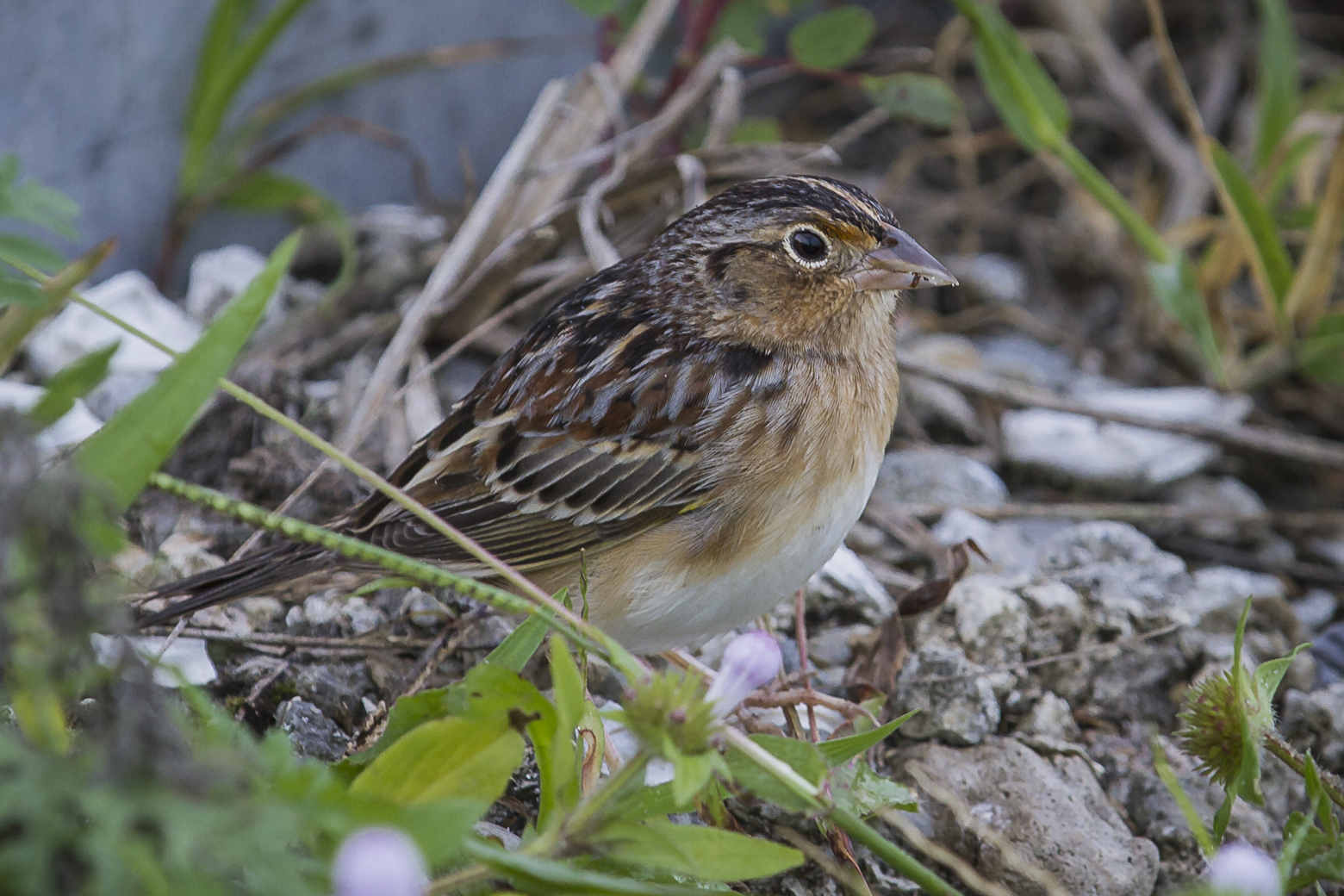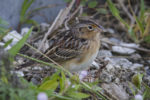
October’s Bird of the Month is the Florida Grasshopper Sparrow, and here is the article in the upcoming October 2017 Kite written by Ben Kolstad.
October – Florida Grasshopper Sparrow Ammodramus savannarum floridanus FE
This federally endangered bird is sometimes a victim of the confusion between taxonomic and common names. You could be forgiven for assuming that Ammodramus savannarum is the Savanna Sparrow. After all, Ammodramus = sandrunner, and savannarum = savanna (or, more technically, treeless plain). But no, of course not. Savannah Sparrow (next month’s bird of the month) is Passerculus sandwichensis. Its common name comes not from a savanna but from the city of Savannah, Georgia (hence the h on the end of the name). So what is Ammodramus savannarum? Why, the Grasshopper Sparrow, of course. Were it a more conspicuous sight, you might see it in the company of the federally threatened Crested Caracara. Unfortunately, owing to its secretive habits and its excellent camouflaging plumage, this bird is almost impossible to spot except when there are “singing” males to triangulate on. Even then you have to know what you’re looking/listening for. True to its common name, Grasshopper Sparrow’s song sounds more like the buzz of an insect than the call of a songbird.
Although populations of Grasshopper Sparrow are relatively stable throughout North America (it’s designated a species of least concern by the IUCN), the Florida population of this bird, restricted to the dry prairies in south-central parts of the state, is federally endangered and has been since 1986. (If you’re wondering why this subspecies of a bird that is quite common elsewhere is considered federally endangered, read this blog post from Florida Audubon.
In a different article, here is what Florida Audubon had to say about this bird’s plight:
The sparrow is so highly endangered due in large part to its exclusive dependence upon Florida dry prairie habitat, more than 85% of which has been destroyed. Most prairie loss has resulted from conversion to domestic pasture grasses, which support more cattle per acre and can support some species of prairie wildlife, but not Florida Grasshopper Sparrows. This “improved pasture” lacks the structure that these birds need. Research indicates the sparrows need native prairie in prime condition—it should burn every two years and as a result have virtually no brush or trees. Burns at the end of the dry season (April-June) are considered better than other times of the year.
As with most endangered species, the main culprit is habitat loss.
(Photographers please note: next month’s BOM is the Savannah Sparrow.)
Please check out the picture by Paul Thomas in the upcoming KITE and to see the slide show of the entire virtual gallery this month, along with photographer etc — click on BOM SLIDE SHOW below the pictures displayed here:
[flickr_set id=”72157686065439831″]
October 2017 Bird of the Month – Florida Grasshopper Sparrow Slide Show


Comments are closed